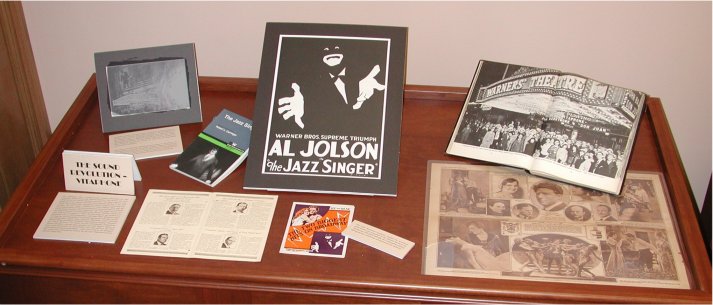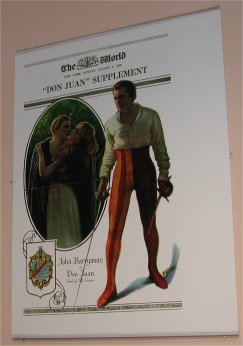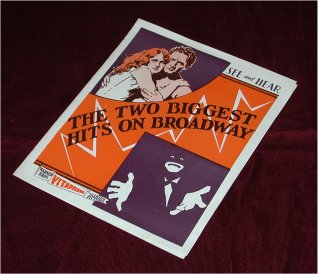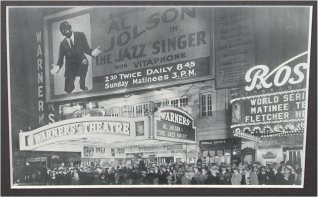

The Vitaphone was a sound-on-disc system developed by Bell Telephone Laboratories and Western Electric. The system was first embraced by the Warner Brothers and over 100 short subjects were produced at the Warner Brothers-First National Studios in the mid 1920s. The cumbersome equipment, used to produce and show the product, did not create a demand for more talking films and the inconsistent quality of the synchronized sound system often produced unintentional laughter from audiences. The first major success was the World Premiere of DON JUAN at the Warner Brothers Theatre in New York City on August 6, 1926.
 |
The film program was treated as a legitimate concert hall presentation with eight short Vitaphone films starring the "greatest galaxy" of performing artists of the day, including Metropolitan Opera tenor Giovanni Martinelli, violin virtuosos Mischa Elman and Efrem Zimbalist, and Al Jolson singing "Mammy" and "April Showers." To round out this introductory programme, Warner Brothers selected their greatest star and biggest feature to date, JOHN BARRYMORE in DON JUAN. The film features the first synchronized musical soundtrack - with sound effects. No dialogue! The result was a thunderous ovation for the new Vitaphone process and the sound film. |
| Al Jolson, perhaps the most famous performer and personality of his time, was chosen to add further publicity to the introduction of the Vitaphone process. Originally intended as a silent film with a few musical numbers, THE JAZZ SINGER became the first "talkie" when Jolson ad-libbed a few lines before each musical number. |  |
| The New York film premier on October 6, 1927 was an unqualified success and a sensation! |  |

The poster for THE JAZZ SINGER presents Jolson in "blackface" (a then popular and socially acceptable showbiz makeup for performers). The poster, itself, has been described as the "best designed film poster in history". There is no mention of Jolson "talking" but the message was clearly conveyed by the striking image presented.
 |
 |
 Box Office |